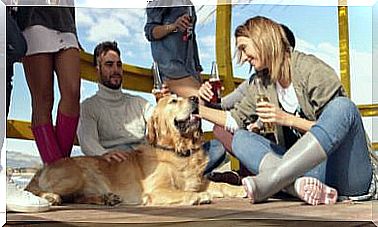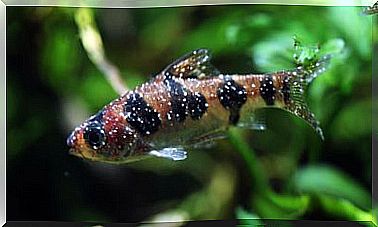What Is Canine Ehrlichiosis?

Canine ehrlichiosis is also known as Canine Tropical Pancytopenia, Tick Disease or Canine Hemorrhagic Fever. It is a widespread and serious infectious disease. It presents a growing number of diagnosed cases in Europe, America, Asia and Africa.
The increase in cases of canine ehrlichiosis in recent years is basically due to the proliferation of Rhipicefalus sanguineus. It is a brown tick that acts as a vector. That is, it shelters and carries the true cause of the disease: the bacterium Ehrlichia Canis (E. Canis).
Despite developing more easily in the body of dogs, the bacteria can also affect cats and humans. This causes serious damage to health.
What is canine ehrlichiosis and how is it transmitted?
Canine ehrlichiosis is a generalized infectious process caused by a specimen of the ricketsia family : the bacterium Ehrlichia Canis (E. Canis). Microorganisms in this family can also cause innumerable more benign diseases than canine ehrlichiosis.

The first scientific notification of an Ehrlichia Canis occurred in Algeria during the 1930s. However, canine ehrlichiosis only became more visible during the Vietnam War. There, a good number of military dogs perished very quickly.
The disease today
But it is only in the 1980s that ricketsias gain prominence in medical studies. Ehrlichia Canis is an intracellular bacterium that is housed in the saliva of the Rhipicefalus sanguineus tick. This little parasite has an enormous capacity for survival.
Not only pets in the big city are at risk of infection. Also large animals in rural areas or wild animals in hotter areas.
Canine ehrlichiosis is transmitted through the bite of ticks infected by the bacterium Ehrlichia Canis. That is why it is important not to expose the infected dog to contact with other dogs. This prevents the massive proliferation of the disease.
What are the symptoms and treatments of canine ehrlichiosis?
After infection, the incubation period in dogs can last from 2 to 6 weeks. The first specific symptoms of canine ehrlichiosis can take up to two months to appear:
- Lack of appetite and weight loss.
- Frequent fever
- Secretions or bleeding in the eyes and nose.
- Difficulty breathing or heavy breathing.
- Edema through the body.
- Ecchymosis or bruising on the skin.
- Swollen glands.
Disease aggravation
If the disease is not treated properly after the first symptoms appear, it can evolve. In this case, the symptoms are aggravated and resemble that of human meningitis:
- Alteration of the senses and perception.
- Tingling sensation in the limbs.
- Lack of coordination of movements.
- Limp.
- Humoral changes.
- Loss of consciousness or dementia.
The intensity of the symptoms depends on factors specific to each animal. A dog with low or older immunity may present symptoms more quickly and / or more intense than younger and healthy animals.
Diagnosis on time
Early diagnosis is essential to allow complete cure of canine ehrlichiosis. Initially, treatment consists of giving antibiotics for 3 to 4 weeks. When the dog is anemic, blood transfusions are also given.

If the disease does not reach the meninges, it is possible to almost completely recover the quality of life of the animal. But damage to the meninges is usually irreversible and leads to death.
It is often difficult to recognize the symptoms of canine ehrlichiosis. They can be confused or camouflaged as signs of minor or benign disorders. Therefore, the best way to avoid canine ehrlichiosis is to periodically take your pet to the vet. There will be the consultations and control and routine analysis.
It is also essential to prevent parasites, contaminated or not, from attacking the animal’s body. For this, it is advisable to carry out the internal and external antiparasitic treatment periodically. In addition, you can use soaps or flea collars. Another option is natural remedies to scare away parasites through smell.
In the case of canine ehrlichiosis, prevention is better than any remedy. Paying attention to your pet can save his life.
Main image source: Mills Baker









